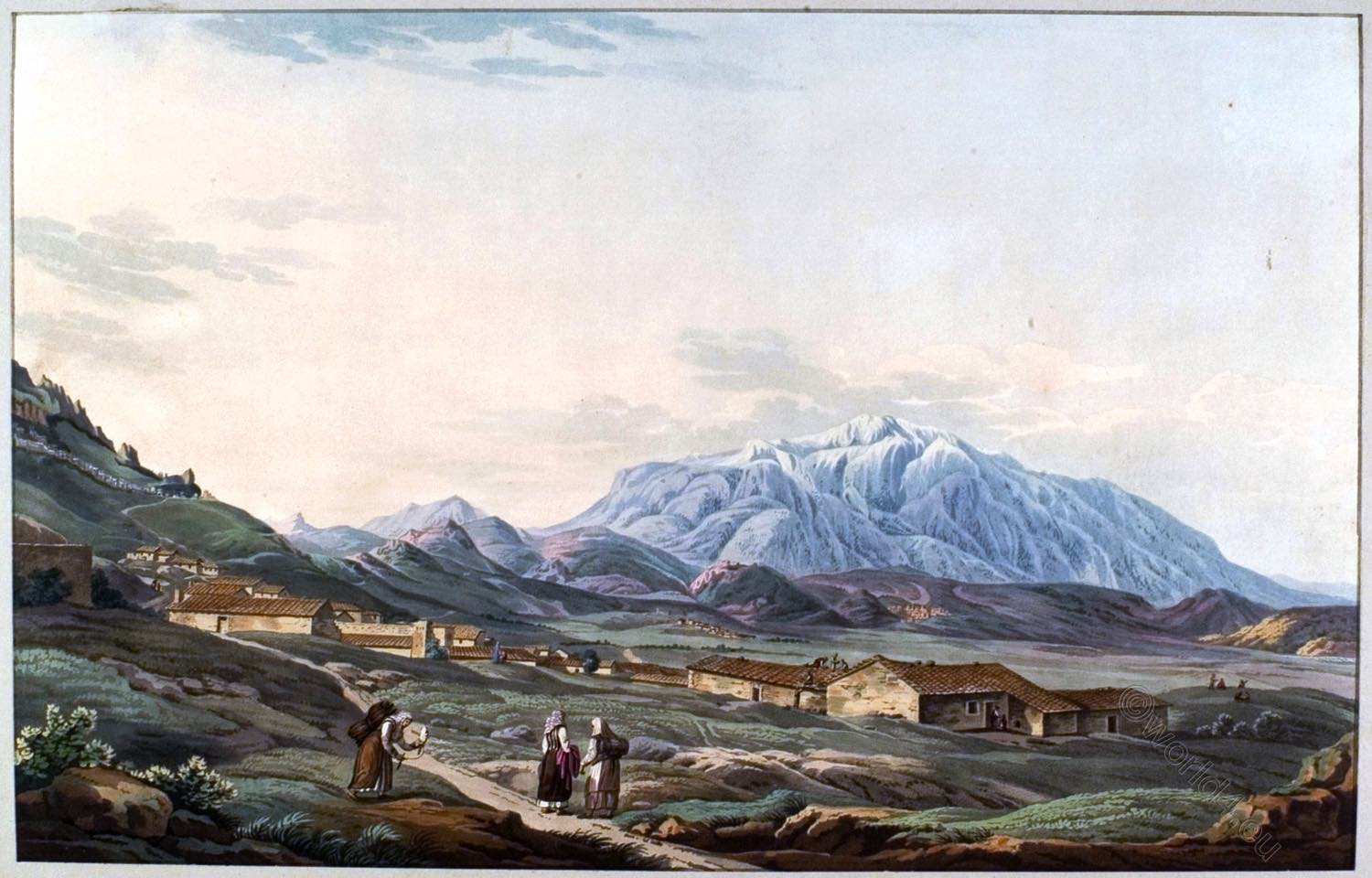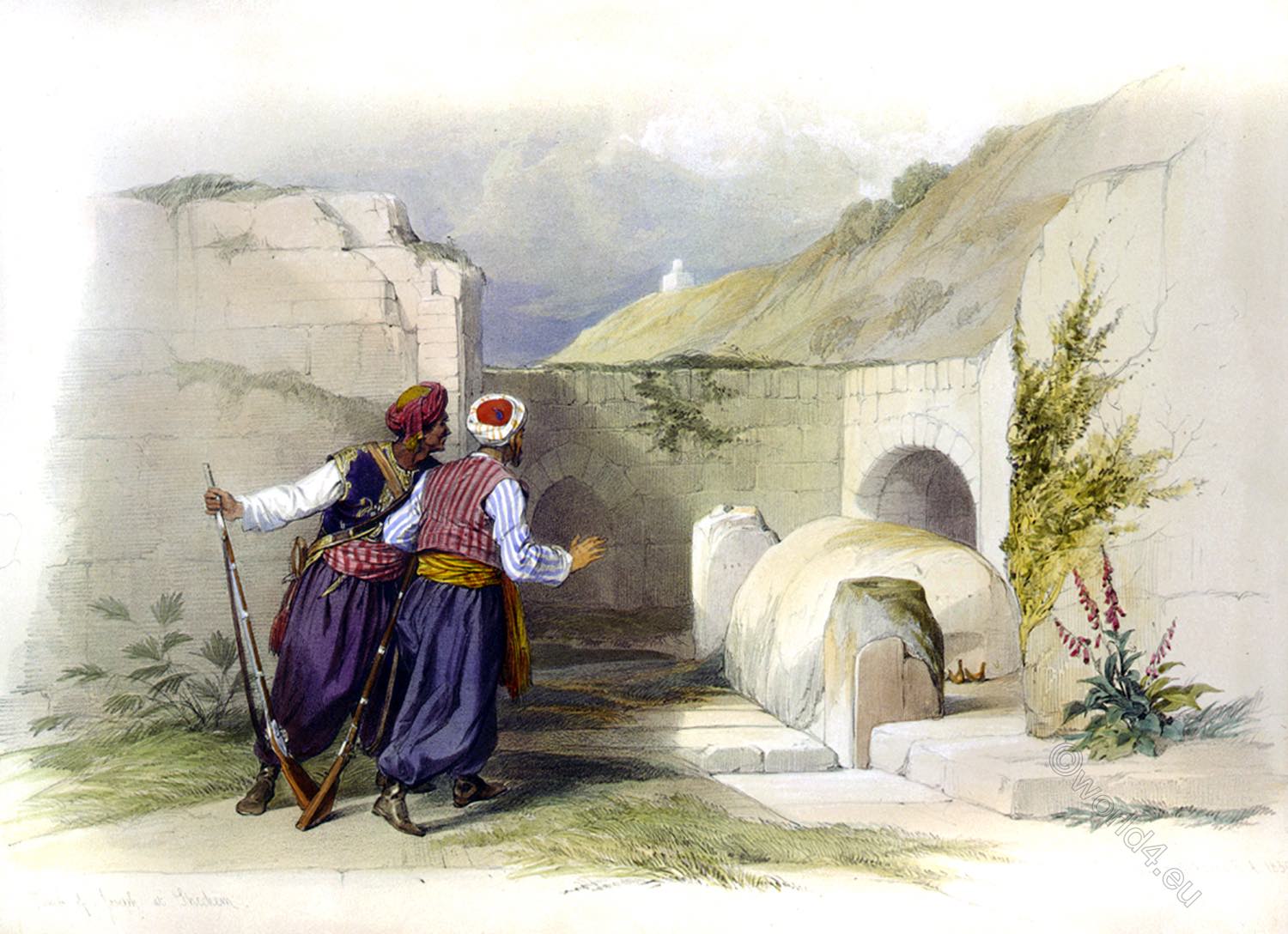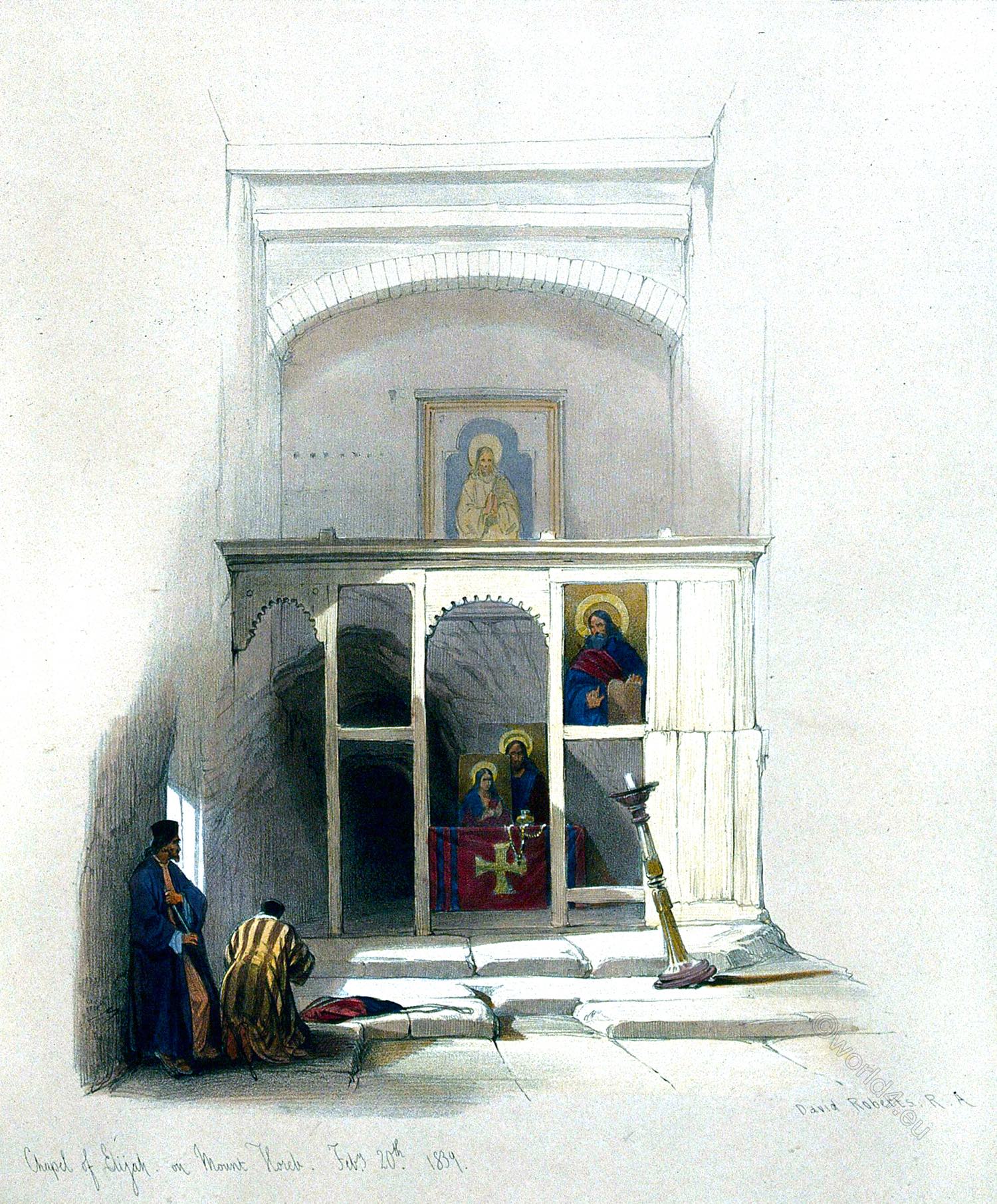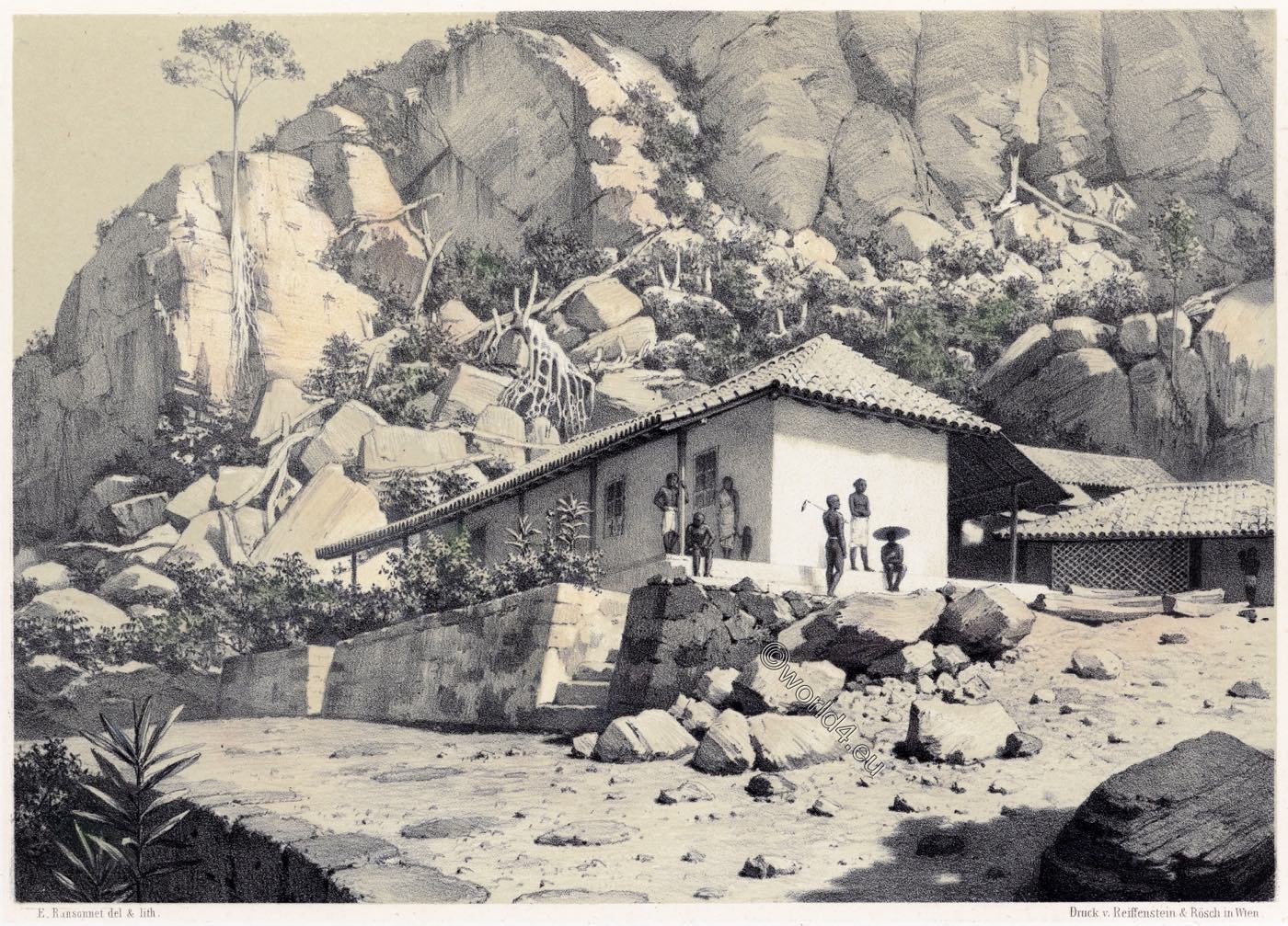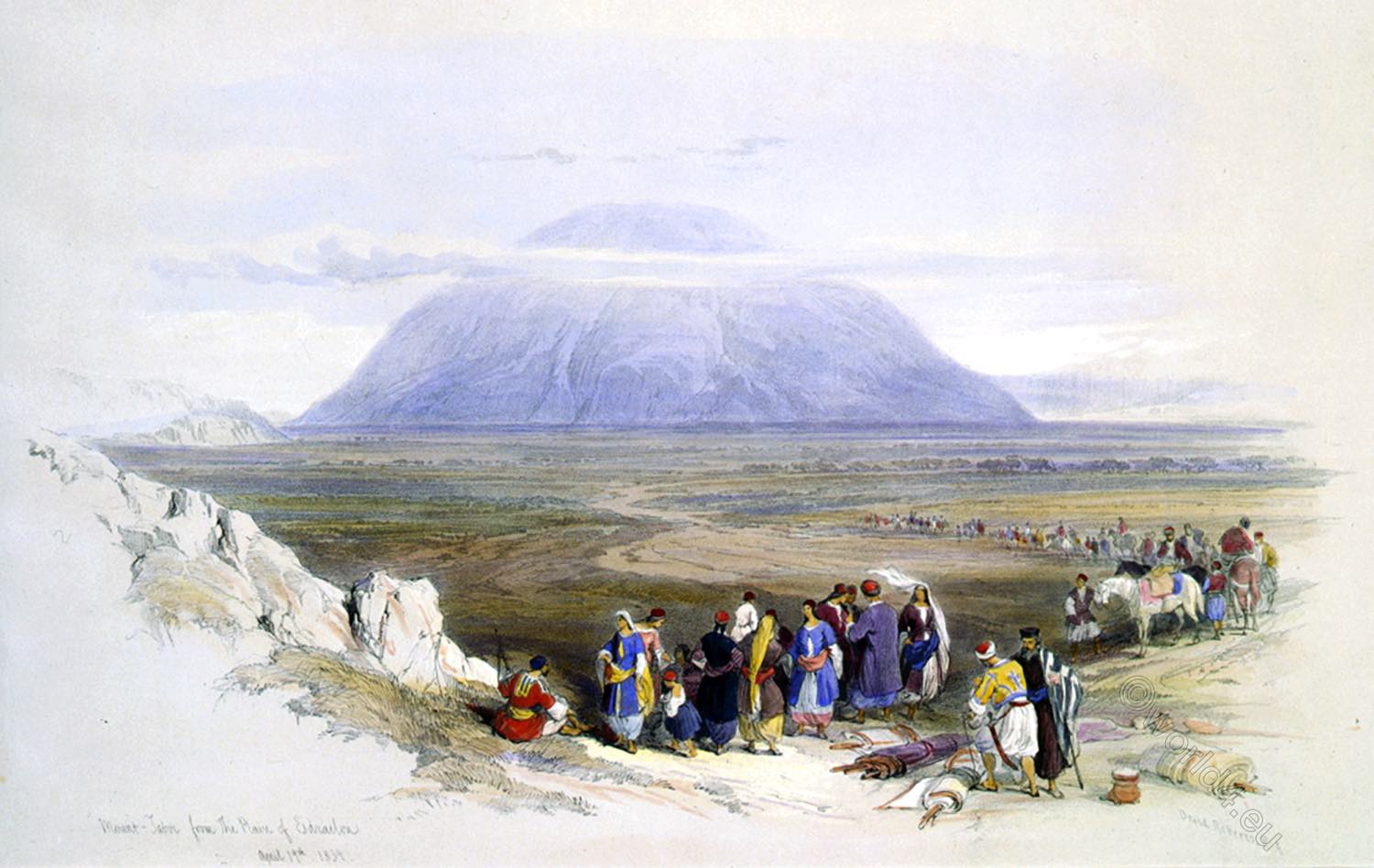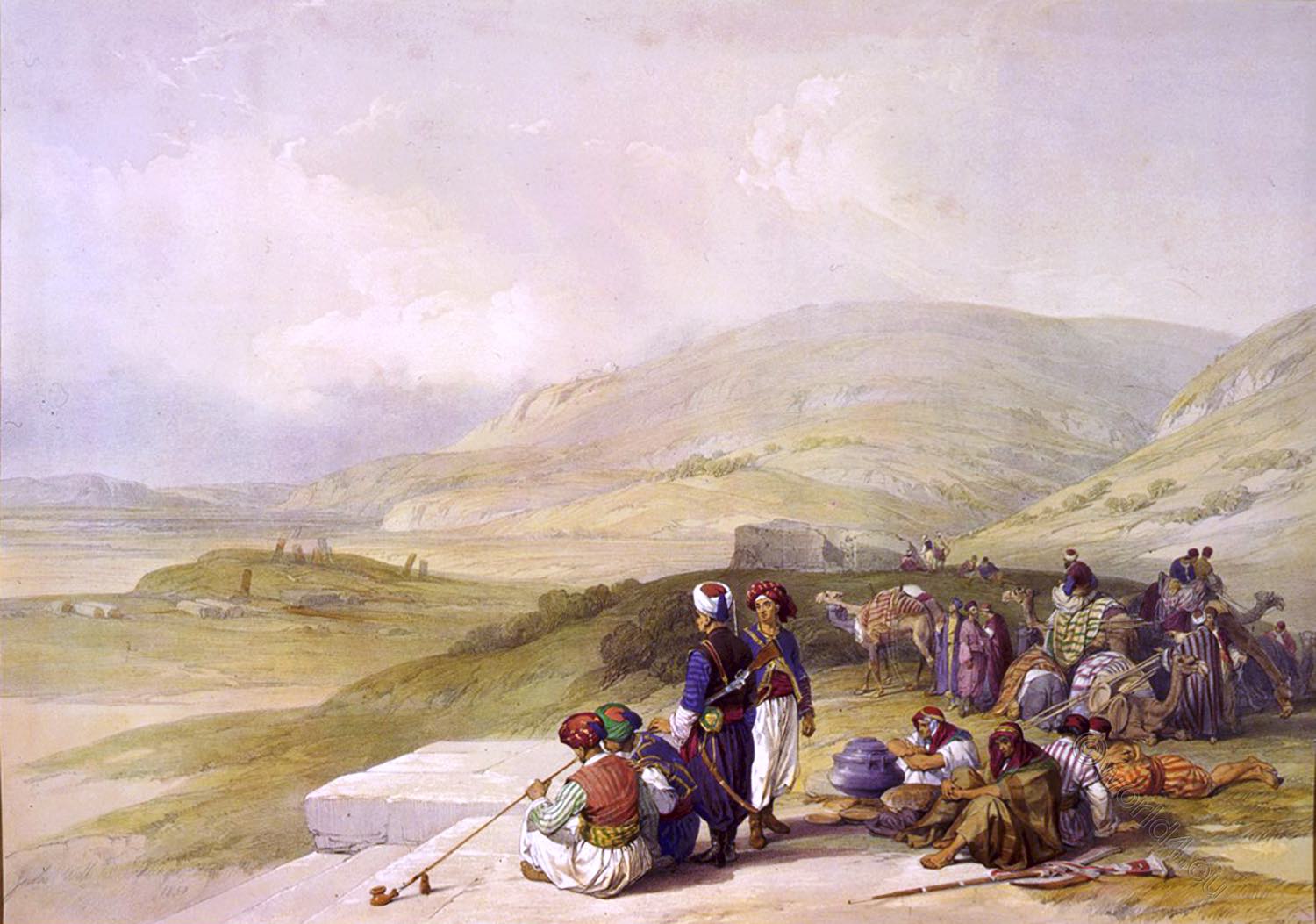
Jacob’s Well is a well in Samaria at the foot of Mount Garizim near Shechem (now Nablus). The tradition of the place goes back to information from the Bible (Gen 33:18-19).
JACOB’S WELL AT SHECHEM.
This most memorable Well is universally honored by the Jews and Samaritans as the Well of Jacob, and by the Christians as the Bir-es-Samiriyeh (the Well of the Samaritan Woman). The conviction of its identity with the latter alone could have prompted the zeal of the early Christians to build a Church over it, but which is now to be scarcely distinguished in its heap of ruins. The broken shafts of some granite columns, half buried in the soil, mark where their zeal and devotion had acknowledged the truth of the tradition in favor of this Well; for, two other fountains, within three or four hundred yards, might have disputed the interest, and the honor of being the historic Well; but, as in the case already shown, of the Tomb of Joseph, which lies in the inclosure seen in this view, all agree as to which is the true object of reverence.
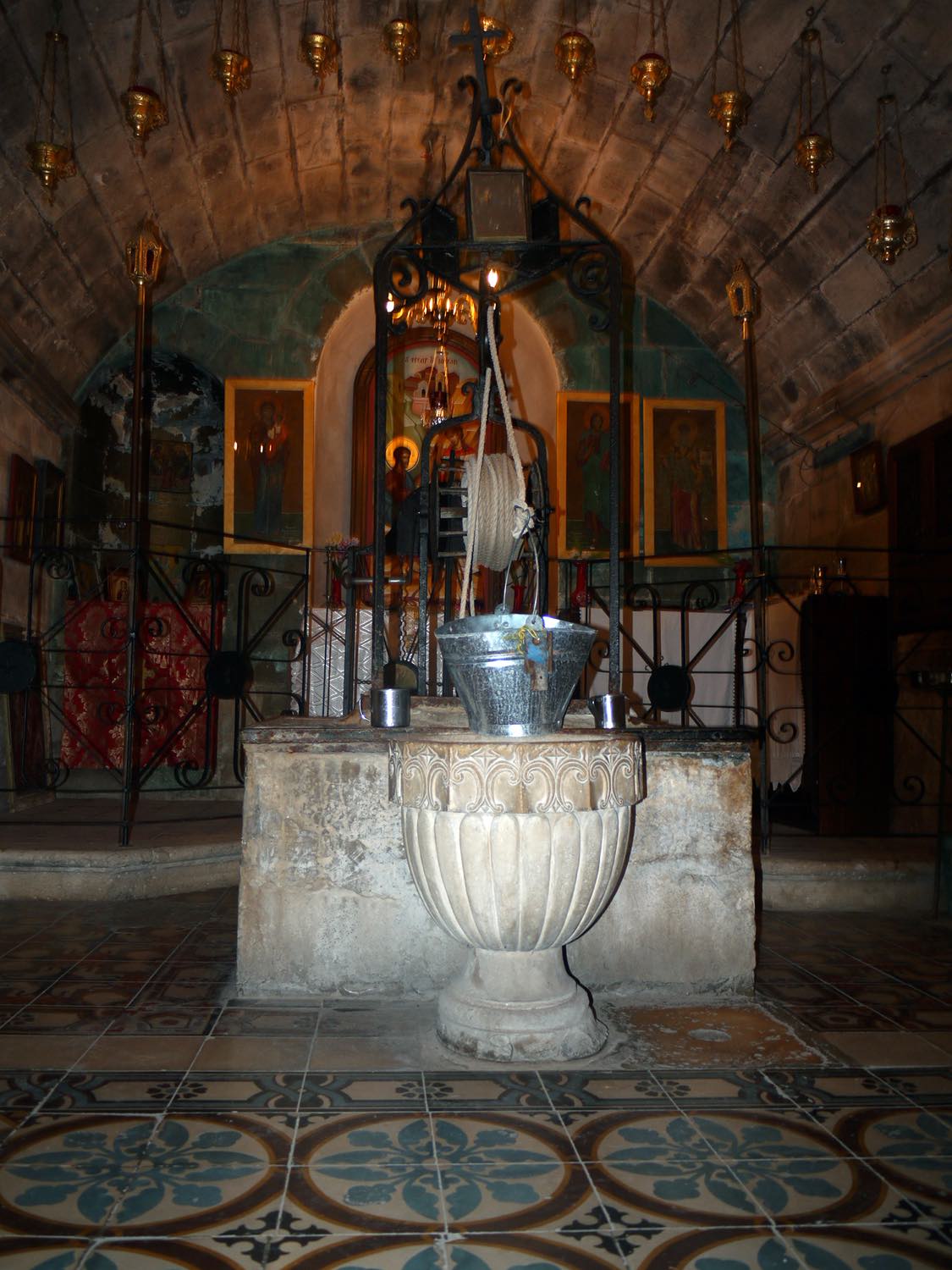
Jacob’s Well in 2013. Author: Jeremiah K Garrett. St. Photina Church (Nablus). Photo taken with permission on a rare day the eucharist was not being celebrated. This file is licensed under the Creative Commons Attribution-Share Alike 3.0 Unported license.
The Church is supposed to have been built in the fourth century, ” though not by Helena, as reported in modern times ; for Eusebius and the Bordeaux Pilgrim mention, as early as a.d. 333, the Well, but not the Church.” It is, however, spoken of by writers of the fifth and sixth centuries. At present only the broken columns of the scattered ruins mark that such a structure existed there. 1)
Robinson enters, with his usual intelligence, into the investigation of the subject: he says,— “Before the days of Eusebius, there seems to be no historical testimony to the identity of the Well with that which our Saviour visited, and the proof must therefore rest, so far as it can be made out at all, on circumstantial evidence. I am not aware of anything in the nature of the case, that goes to contradict the common tradition; but on the other hand, I see much in the circumstances, tending to confirm the supposition, that this is actually the spot where our Lord held his conversation with the Samaritan woman. Jesus was journeying from Jerusalem to Galilee, and rested at the well, while ‘his disciples were gone away into the city to buy meat.’ 2)
The well, therefore, lay apparently before the city, and at some distance from it. In passing along the eastern plain, our Lord had halted at the well, and sent his disciples to the city, situated in the narrow valley, intending, on their return, to proceed along the plain on his way to Galilee, without entering the city. All this corresponds exactly with the present character of the ground. The well, too, was Jacob’s Well, of high antiquity; a known and venerated spot, which, after having lived for so many ages in tradition, would not be likely to be forgotten in the two and a half centuries, intervening between St. John and Eusebius.
I think we may thus rest with confidence in the opinion that this is Jacob’s Well, and here the parcel of ground that Jacob gave to his son Joseph. Here the Savior, wearied with his journey, sat upon the well, and taught the Samaritan woman those great truths, which have broken down the separating wall between Jews and Gentiles: ‘God is a Spirit; and they that worship him, must worship him in spirit and in truth.’ Here, too, as the people flocked to him from the city to hear him, he pointed his disciples to the waving 3) fields which decked the noble plain around, exclaiming, ‘Say not ye, There are four months, and then cometh harvest?
Behold, I say unto you, Lift up your eyes, and look on the fields, for they are white already to harvest!’ We returned to our tent, wearied indeed in body, but refreshed in spirit, as we read anew, and in the midst of the very scenes, the account of our Saviour’s visit and sublime teaching. 4)
1) Biblical Researches, iii. 109. Roberts’s Journal.
2) John, iv. 3—8.
3) The epithet “waving,” if it imply the maturity of the crop, wants the Author’s habitual accuracy. Our Lord’s allusion was obviously to the contrast between the physical nakedness of the field at that moment, and the spiritual harvest, which his eye saw ripening.
4) Biblical Researches, iii. 108
Source: The Holy Land, Syria, Idumea, Arabia, Egypt, & Nubia, by David Roberts, George Croly, William Brockedon. London: Lithographed, printed and published by Day & Son, lithographers to the Queen. Cate Street, Lincoln’s Inn Fields, 1855.
Continuing

